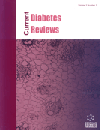
Full text loading...
We use cookies to track usage and preferences.I Understand
Diabetes Mellitus develops when the body becomes unable to fuel its cells with glucose, which results in the accumulation of sugar excess in the bloodstream. Because it has diverse pathophysiological impacts on the body, diabetes mellitus represents a significant issue of concern in an attempt to find suitable treatment modalities and medications for afflicted diabetic patients. Glucagon-like peptide 1 (GLP-1) plays a pivotal role in the incretin effect, emerging as a prospective treatment for diabetes mellitus and a promising means of regenerating pancreatic cells, whether directly or through its receptor agonists. It has been shown that GLP-1 efficiently increases insulin production, lowers blood sugar levels in patients with type 2 diabetes mellitus, and decreases appetite, craving, and hunger, therefore amplifying the sensation of fullness and satiety. Moreover, since they are all dependent on GLP-1 effect, intricate signaling pathways share some similarities during specific phases, although the pathways continue to exhibit significant divergence engendered by specific reactions and effects in each organ, which encompasses the rationale behind observed differences. This triggers an expanding range of GLP-1 R agonists, creating new unforeseen research and therapeutic application prospects.
This review aims to explain the incretin effect, discuss how GLP-1 regulates blood glucose levels, and how it affects different body organs, as well as how it transmits signals, before introducing selenium's role in the incretin impact.

Article metrics loading...

Full text loading...
References


Data & Media loading...

